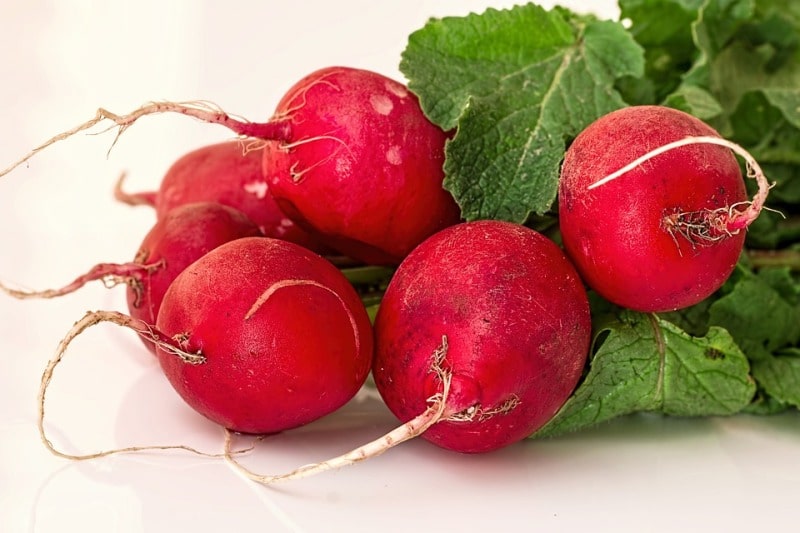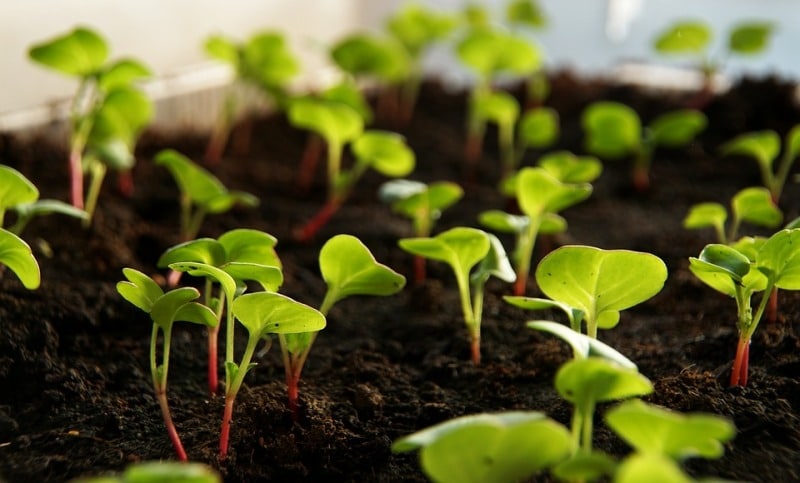A step by step guide for growing radish
Today, we discuss the growing radish, radish planting methods, radish plant growth stages, growing radish plant indoors. Radishes reach the stage of maturity rapidly. Few varieties of radishes take only 20 days from the stage of seed to get matured. They are also very hardy. The flavor of radishes is peppery and it will add extra taste to soups and salads. Radishes require very small space in your garden. To start the growth of radishes in a successful manner, it would be helpful if you follow the below instructions.
Varieties of radishes:

- You will have to make a decision about what type of radishes you are interested to plan. Like most of the vegetables, there are large numbers of varieties of radishes considering both open-pollinated and hybrid. If you have just begun gardening, you can take into consideration growing Cherry belle radishes as they reach the stage of maturity in just about 3 weeks and they also have a flavor which is mild and pleasant.
- Spring radishes are the ones which most of the people know about similar to Cherry Belle radish which would be red externally and white internally. You will have to ensure that you are growing these at the time of spring or autumn. These are the radishes which grow fast.
- In the same way, summer radish is almost the same as the spring radish but it grows very slowly and takes around 2 months to reach the stage of maturity.
- The winter radish is larger than the spring and summer radishes and it will take a long time to grow. It is perfect to start sowing this at the end of summer for a harvest at the time of spring or autumn. Daikon and Champions are the types of winter radishes. Daikon will be able to grow up to a length of 18 inches and will take 2 months to reach the stage of maturity and this will consist of varieties which are extra-spicy.
You may also like Growing Okra Hydroponically.
Preparation of soil for plantation:
- Choose the correct spot for growth. The plantation of radishes has to be done in an area that receives full sun. Even partial shade is acceptable with a soil which is well-drained. Make sure that you are removing any rocks which are present in the soil as the roots will undergo bifurcation around the rocks which will be in their path. Addition of organic matter to the soil has to be done prior to the plantation like manure, compost or leaf mould.
- Ensure that you are radishes are receiving a lot of sunlight. Else, they will grow to be big on the top and tiny in the root part. Anyways, too much amount of sunlight may cause radishes to start seeding.
- The soil should not consist of any rocks. It should be well-drained and its pH has to be around 7.5. The pH has to be high as it will help in the prevention of clubroot, a fungus which infects brassica and caused swelling in roots, cracks, and rot and sometimes lead to the death of the plant.
- For increasing the pH, you will have to add some amount of agricultural lime or dolomite lime at the time of autumn. Make sure that you are using a lot of organic matter such as compost in the soil.
- In order to get the best results, you will have to test the soil or you can also send some samples of soil to a lab for checking if it has a proper amount of nutrients. You will have to make amendments to the soil at least a week prior to the plantation.
- Radishes are the vegetables which love to grow when the climatic conditions are cool. It would be best when you plant them at the time of spring or autumn. Considering to grow radishes when the climatic conditions are hot may lead to bolting. Plantation of your first crop can be done prior to two weeks of the last frost at the time of spring as radishes will be able to tolerate frost well.
- Make sure that you are not growing radishes when summer comes up. This will generally mean that if you are having 16°C daily, you should stop the plantation of radishes until the climatic conditions become cooler.
- The germination of a typical spring radish will take place in about 5 days and it would be prepared for harvest in about a month.
- As radishes are the vegetables which grow quickly, you can also consider inter-cropping them between the vegetables which grow slowly for making row markers. You can also consider succession planting them by starting to sow a new row on a weekly basis. This can be done for spreading the harvest for a longer time.
You may also like Growing Agakara from Seed.
Growing radish plants:

- Let us discuss the radish plant growth stages For growing the radishes, you will have to first sow the seeds of radish. They should be sown at a depth of ½ inch and a distance of 1 inch from each other. As they undergo the process of germination, the seedlings which are successful have to be thinned so that there would be a distance of at least 2 inches from each other, giving more amount of space for the radish varieties which are bigger. The plantation of rows has to be done at a distance of 1 foot from each other.
- The thinning of radishes should be done when they grow to a length of 1 inch. Make sure that you are cutting off their heads up to the soil by making use of a tiny pair of scissors.
- If you are going with the plantation of large radish, the first thing you have to do is the plantation of seeds at a depth of 1 inch.
- Radishes are the ones which do well when planted as companion plants as they keep away most of the pests from common plants and moreover, they grow very quickly. Radishes have to be planted along with cabbages, parsnips, and carrots.
- Make sure that you are watering the radishes when they are growing. The radish beds have to be maintained in moist conditions, but make sure that you are not soaking them. Radishes have to be watered in a frequent and uniform manner so that it would lead them to quick growth. If radishes are growing slowly, then their taste would be woody and hot. Also, make sure that you are adding compost to the radish bed as you wish so that it would help in retaining the moisture.
- If you are not watering the radishes in a uniform manner, then there are chances that there would be cracks in your radishes.
You should not miss Growing Saffron Hydroponically.
Growing radish in containers:
- Growing radish indoors is also possible. Start the preparation of the container at a minimum depth of 6 inches. A container with a diameter of 16 inches will be able to accommodate at least 5 radishes while a pot which is 24 inches would be able to accommodate 20 radishes. Also, make sure that the container has a drainage hole at its base.
- The container has to be filled with a standard potting medium which is commercial. The potting medium has to be lightweight as it will be well-drained. Make sure that you are avoiding garden soil which will become compact and will not let the water to get drained.
- Also, work on a time-release fertilizer by adding it to the potting medium. Make use of a garden fertilizer with an n-p-k ratio of 10-10-10. The fertilizer has to be applied at a rate of a half tablespoon of dry fertilizer for 3 liters of the potting mixture.
- Now, the radish seeds have to be sprinkled on the soil surface, Make sure that you are covering the seeds with ½ inch of soil.
- The radishes have to be watered in a careful manner so that you can avoid washing of seeds from the soil. Water has to be added until it passes through the drainage holes. After that, you can water whenever you feel that the soil’s top is dry when you touch it with your fingers. Radishes may need watering on a daily basis when the climatic conditions are warm as the soil which is present in the container gets dried rapidly.
- The container has to be placed in a location where there would be exposed for radishes to the sun for at least 6 hours a day.
- The plants have to be fertilized when the radishes start emerging. Make sure that you are applying a water-soluble fertilizer which is balanced and this has to be applied based on the instructions present on the label. This has to be repeated for every 7 to 15 days until the time of harvest.
- The radishes have to be thinned when the plants reach a length of 2 inches. The plants have to be placed at a distance of 2 inches from each other.
- The radishes have to be harvested as soon as they reach the size which is edible. But make sure that it does not exceed 1 inch in terms of diameter. Do not wait for too long as the radishes will develop a bitter flavor in a quick manner.
You may be interested in Red Sandalwood Plantation.